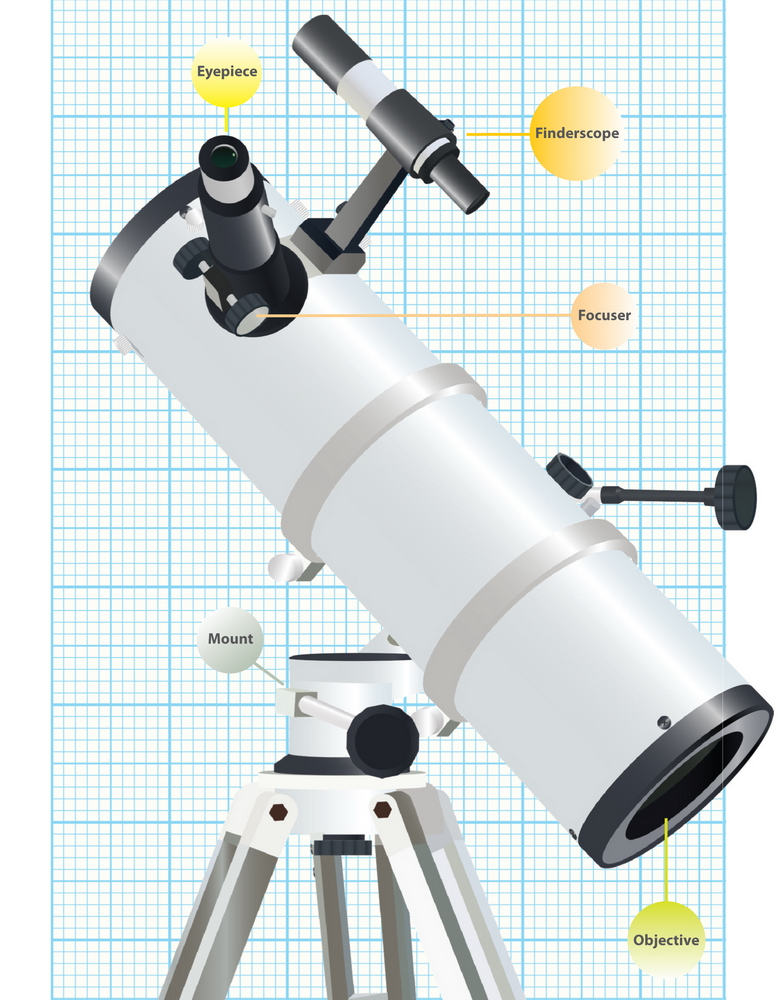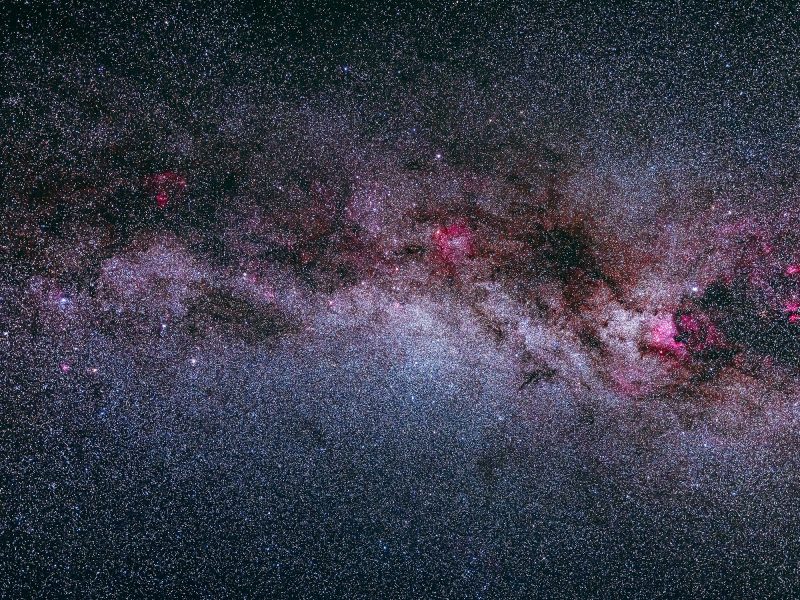Buying your first telescope can be a daunting task. There are many factors to consider and a bewildering number of options to choose from. Scopes come in several optical flavours, including reflectors, refractors and compound instruments (Schmidt-Cassegrains and Maksutovs). Each design has its strengths and weaknesses. Reflectors (and compound scopes) tend to offer the most bang for the buck but require periodic adjustment to keep them tuned up. Refractors are relatively maintenance-free but are generally more costly.

Regardless of design, if you stay focused on the important big-picture items highlighted below, you’ll end up with a telescope you’ll enjoy using for several years. Think of this as a “quick-start” guide to selecting an instrument.

Objective
No other single specification is as important as the diameter of the instrument’s main light-collecting element, or objective, be it a precision mirror (in Newtonian reflectors) or an objective lens (in refractors). You don’t want to sacrifice optical quality for aperture, but a big scope with good optics will show more than a small scope with a perfect lens. Unless portability is an overriding concern, look for something in the 6- to 8-inch aperture range. Smaller instruments deliver less detail and have a tough time revealing faint targets. On the other hand, bigger scopes mean wrestling with a lot of bulk and weight.
Eyepieces
Telescope eyepieces are a lot like camera lenses—the kit lens that came with your DSLR works fine, but eventually, you’ll find it a bit limiting. A starter scope includes one or two eyepieces, but these tend to be serviceable rather than exceptional. To fully exploit your telescope’s capabilities and cover a wide range of magnifications, budget for a couple more eyepieces. And just like camera lenses, good eyepieces can be expensive. The extra cost buys you better quality and more sophisticated designs with fewer optical aberrations.
Focuser
Look for a unit that takes either 1¼- or 2-inch eyepieces, which are the most commonly available. A focuser that accommodates 2-inch eyepieces usually comes with an adapter to accept 1¼-inch models, offering the best of both worlds. Many units now feature 10:1 fine-adjustment controls that make tweaking a high-magnification image much easier, but expect to pay a premium for this. If you can, check the focuser in person to ensure that it moves smoothly without play or backlash.
Mount
Numerous types of telescope mounts are available, including some that are computerized to point automatically at your selected target. But for your first scope, basic is usually best. A straightforward altazimuth or Dobsonian mount with simple up-down, left-right motions takes a lot of the mystery out of aiming your telescope. The sturdier the mount, the better. Few things in astronomical life are more frustrating than a telescope that jiggles in the slightest breeze or jumps around whenever you touch the focuser.
Finderscope
Aiming your scope is much more easily achieved with a good optical finderscope or unit power device. Both types of finders have their pluses and minuses. An optical finder often presents an upside-down view, which can be disorienting. But these mini-telescopes allow you to see stars fainter than you can with your eyes alone. Despite that, most beginners find a “red dot” unit finder simpler to use. The downside is you’re restricted to naked-eye stars. In suburban and urban sky conditions, that can mean a lot of distance between signpost stars and your desired target.
You can get a decent scope for as little as $250. But whatever your budget number is, the telescope portion should constitute only about 70 percent. In other words, if you decide you can afford $1,000, don’t spend more than $700 on the scope itself. The additional $300 will come in handy for the extras you’re going to need to get the most out of it.





